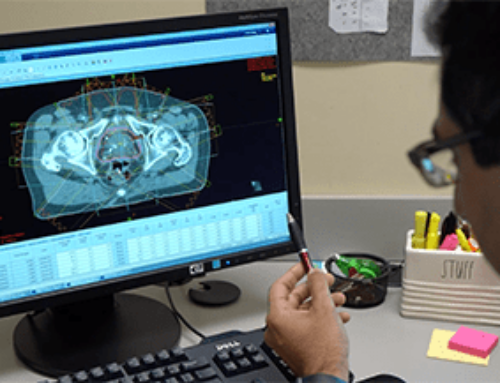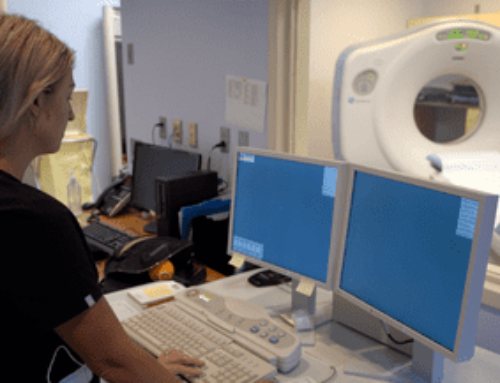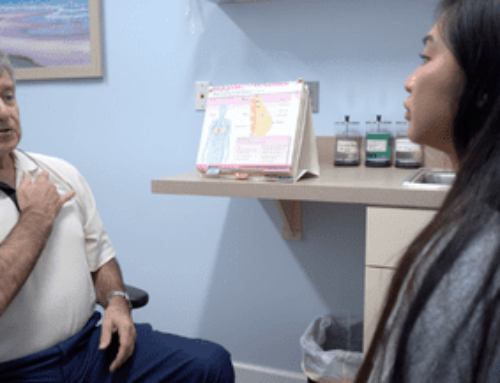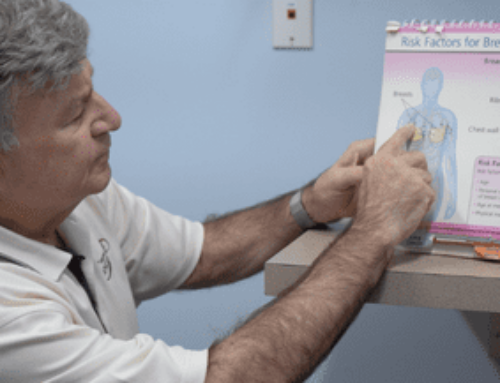With prompt and proper treatment, the vast majority of prostate cancer patients are able to overcome the disease. The 5-year survival rate (what percent of men live at least five years after the cancer is found) for most men with local prostate cancer is almost 100%, and 98% are alive after ten years.
According to Steven G. Lester, M.D., FACRO, a board-certified radiation oncologist, at Central Florida Cancer Care Center, a major component in today’s treatment success are the different radiation treatments available for prostate cancer patients.
“We have two forms of radiation we can use for prostate cancer,” says Dr. Lester. “One is a radioactive seed implant, and the other is daily radiation treatment utilizing an intensity-modulated radiation therapy (IMRT) or image guided radiation therapy (IGRT) technique period. Many patients are candidates for both or a combination of the two treatments.”
How Do Radioactive Seed Implants Work?
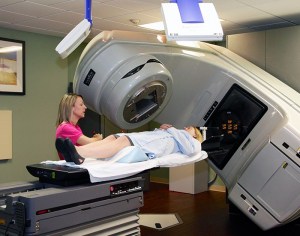 Also known as brachytherapy or internal radiation therapy, radioactive seed implants are a permanent form of radiation therapy to treat prostate cancer. During the procedure, radioactive (iodine-125) or (Palladium-103) seeds are inserted into the prostate gland with the help of an ultrasound. A computer-generated treatment plan customized for each patient determines the amount and placement of the seeds.
Also known as brachytherapy or internal radiation therapy, radioactive seed implants are a permanent form of radiation therapy to treat prostate cancer. During the procedure, radioactive (iodine-125) or (Palladium-103) seeds are inserted into the prostate gland with the help of an ultrasound. A computer-generated treatment plan customized for each patient determines the amount and placement of the seeds.
”Radioactive seed treatment is performed in the operating room,” says Dr. Lester. “Working in conjunction with a urologist, between 50 and 120 radioactive seeds (similar in size to the short side of a staple) are placed into the prostate utilizing needle sticks. Ultrasound in the rectum guides the placement of the seeds.”
The implants remain in place permanently and become inactive after about ten months. The procedure enables a high dose of radiation to be administered to the prostate with minimal damage to the surrounding tissues. Compared to external radiation which entails short daily treatments for up to nine weeks, radioactive seed implants offer eligible patients a much more convenient option.
Who is a good candidate for the procedure?
The best candidates for radioactive seed implants are patients whose cancer is contained within or near the prostate. Patients with prostate cancer that has invaded neighboring structures like the bladder or rectum are typically not appropriate candidates for radioactive seed treatment.
“Radioactive seeds is an excellent technique when the patient has a small gland, a small localized cancer, and they can urinate well,” says Dr. Lester. “Patients who don’t urinate well because they have an enlarged gland, often get too much swelling from having 30 or 40 needles placed in their prostate. The advantage of that procedure is that it’s a one day procedure, you get it over within about an hour.”
What Is IGRT and IMRT Radiation Treatment?
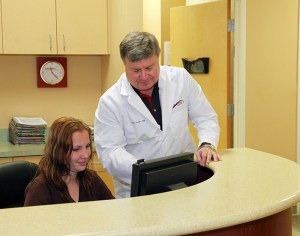 For the majority of prostate cancer patients, image-guided radiation therapy (IGRT) is the go-to choice for targeting and treating prostate cancer. IGRT is a type of daily conformal radiotherapy that allows higher doses of radiation to be given to the tumor while limiting the impact on healthy tissue. The method uses advanced imaging technology before and during radiation therapy to enhance the precision and accuracy of treatment delivery.
For the majority of prostate cancer patients, image-guided radiation therapy (IGRT) is the go-to choice for targeting and treating prostate cancer. IGRT is a type of daily conformal radiotherapy that allows higher doses of radiation to be given to the tumor while limiting the impact on healthy tissue. The method uses advanced imaging technology before and during radiation therapy to enhance the precision and accuracy of treatment delivery.
“The other option for prostate cancer patients is daily radiation treatments, what the bulk of patients in this country are treated with,” says Dr. Lester. “Those are daily from Monday through Friday, and take about 15 minutes a day. There’s no pain; it’s like having a cat scan or an MRI. The beam time is about three or four minutes.”
Precise tumor locations can shift as a result of routine, subtle movements in the body due to breathing, bladder, and bowel function. Image-guided radiation treats tumors situated on or near vital bodily structures prone to movement including the lungs, liver, and prostate.
IGRT is often used alongside intensity-modulated radiation therapy (IMRT), a method of advanced-precision radiotherapy that uses computer-driven x-rays to carry targeted radiation to a malignant tumor.
According to Dr. Lester, IGRT comes with minimal side-effects and health risks to the patient. “The important thing to know is that there’s no sickness, no nausea, and no pain,” he says. “The main inconvenience is coming in and out for treatment for nine weeks. While some patients consider that a hassle, those of us who want to cure cancer do not. Nine weeks of daily treatment to get rid of a serious disease is not so bad.”
Results and Recovery from Radiation Treatment
According to Dr. Lester, most patients experience little if any side effects after radiation treatment and are able to return to their regular routines seamlessly.
“When you finish the treatment, you get up and go about your daily life, hardly noticing anything,” says Dr. Lester. “You might notice after a couple of weeks due to a little swelling in the gland that you urinate more frequently with urgency. You may have fatigue where you feel like having a nap. Many patients don’t even notice it, and the younger patients keep working right through treatment.”
Despite the inconvenience of coming into the clinic every weekday for a mere fifteen minutes, Dr. Lester urges patients to look at the bigger health picture and do everything in their power to help their radiation oncologist or surgeon help them get better. “We want to fit into your schedule the best we can,” he says. “However, we have a serious medical problem we are trying to eradicate so giving us fifteen minutes a day for nine weeks is really not a lot. It’s important to work with the staff if you would like to be treated with radiation.”
“If you opt for surgery, work with your surgeon, and he’ll get you through the procedure and over the side effects. Hopefully, you’ll be able to lead a normal lifestyle, put it behind you and be one of those patients that we’ve cured.”


